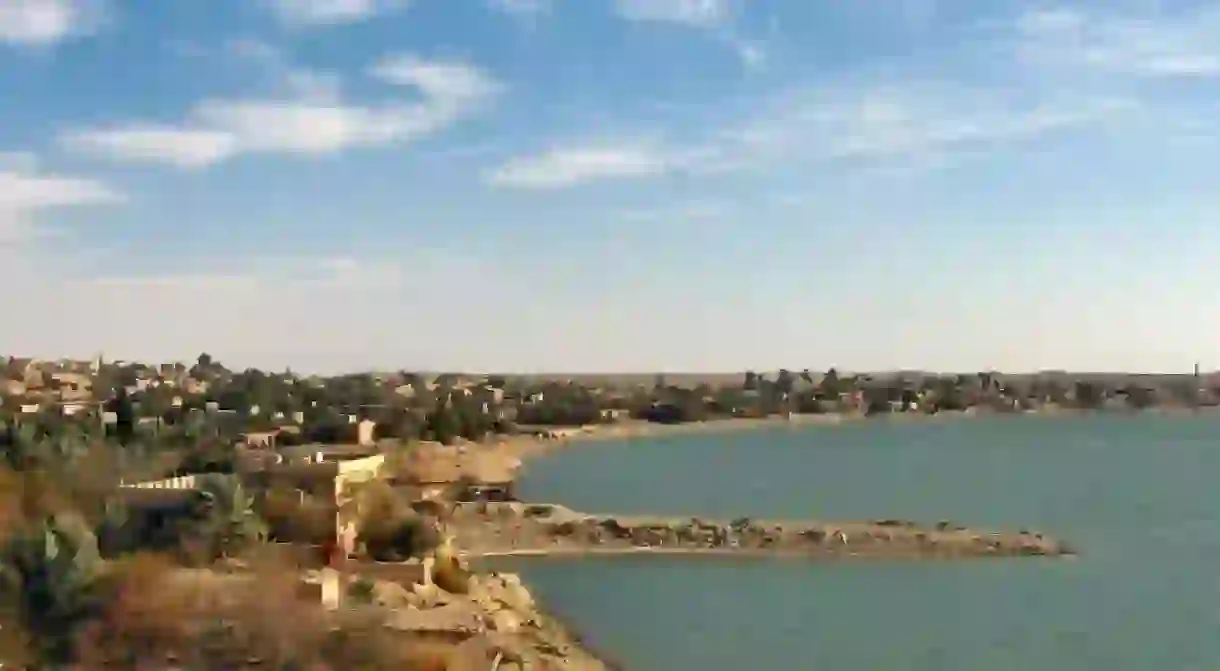Iraqi Music From Everyday Life To Mourning

Situated at the northeastern end of the Arab world, Iraq is an important melting pot for Persian, Turkish, Kurdish, Turkmen and various other Middle Eastern cultures. In Iraq, music plays an important role in everyday life: communities will join together to perform secular songs with religious themes; shepherd, masons and farmers sing songs to accompany their work; and important life landmarks – such as births, deaths, graduation from school, a return from a pilgrimage, or a fulfillment of a wish – can frequently entail the use of music.
Musical characteristics
Despite the influence of different cultures, Iraqi music has several distinctive musical characteristics. Vocal expression is the most dominant type of Iraqi music, and improvisational free-rhythmic singing and metric songs (including dance songs) have a significant role. The boundaries between secular and religions or art and folk music are not clearly defined, making influences and connections between these genres and overlapping repertories widespread.
Music as Entertainment
Music plays an important role in social gatherings, where amateurs perform popular music for pleasure and to entertain themselves and friends. Turkmen and Kurdish amateur musicians in the north join together in the evening after work to sing songs on topics including love and separation, as well as epics accompanied by the tanbur, a long-necked lute.
In the rural areas of the central and southern Euphrates, musicians meet in a communal gathering place called muḍīf ordiwāniyya, where they perform poetic creations and ubuthiyya songs that have a considerable emotional effect. The southeast Amarah region has a slightly different tradition. Rather than performing themselves, the rich feudal sheikhs hire musicians to entertain visitors for several nights on end.
Professional gypsy music
For any Arab festive event, professional gypsy musicians, or kawlīyya, play an important role. The kawlīyya are the main body of professional musicians who work in the western, southern and central regions of Iraq. These musicians perform as families, providing their entertainment to a largely male audience. Their performances consist of a woman soloist who dances while singing music from the rural and Bedouin Arabic repertory or sometimes urban maqām repertory. A man accompanies the soloist, who plays a wooden monochord spike fiddle (rabāb) or he may play a modern metallic version. The musical style is characterized by their use of a regular rhythmic pattern and brilliant, fast, and strongly rhythmic sequences.
The most popular dance from the gypsy repertoire is the hacha ‘scorpion’ dance. The dancer flings her head and shoulders back as she crouches on her knees and moves to the rhythm of the audience’s hand-clapping and verbal interjections of ‘hacha’, meaning to lie down.
Music and dance in rural areas
Dabka is the generic term given to a secular, communal dance performed by women and men, either separately or together. In rural areas, dabka dancing, performed in communal open-air spaces, are an important feature of festive occasions. During the dance, participants form a semicircle holding each other by the waist or shoulder while tapping their feet on the ground. Dabka are performed to the music of a solo singer accompanied by a shawm (tabl wa zurna, a medieval woodwind instrument) or double clarinet (mitbaj) and a drum.
There are some variants of dancing traditions between different areas in Iraq. In central Iraq, a dance originally linked with warfare called the sās is performed at weddings, circumcisions and other feasts. The dance involves two dancers either on foot or on horseback who brandish swords or staves and shields. The sās is accompanied by a drum, shawm and two kettledrums. Meanwhile in the extreme south, the dances called ‘ardha and sāmrī are performed by two groups of dancers who also sing antiphonally (meaning they sing in a call and response pattern) and are accompanied by a round, shallow double-headed drum called the tabl al-‘ardha or other types of drums.
Mourning music
Music also plays an important role in mourning ceremonies. At men’s gatherings, the Qur’an is recited for three days. The women’s version is more elaborate and last seven days. A female mourner, called an addāda, poetically recites the qualities of the dead person and utters her sorrow of separation. The women express their grief by generating short and punctuated guttural sounds in response to the mourner’s singing. During the ceremony, they will also beat their chests and faces and perform a mourning dance called chaīna.
Mourning ceremonies for a child, youth, unmarried person or a newly married person without children, require a different kind of service. The family will simulate marriage festivities, and an ensemble called al-mūsīqā al-sha‘biyya is invited to precede the burial procession, playing brass instruments of military origin with a drum and the shawm. The family will then sing marriage songs around a coffin surrounded by decorated trays with candles.













